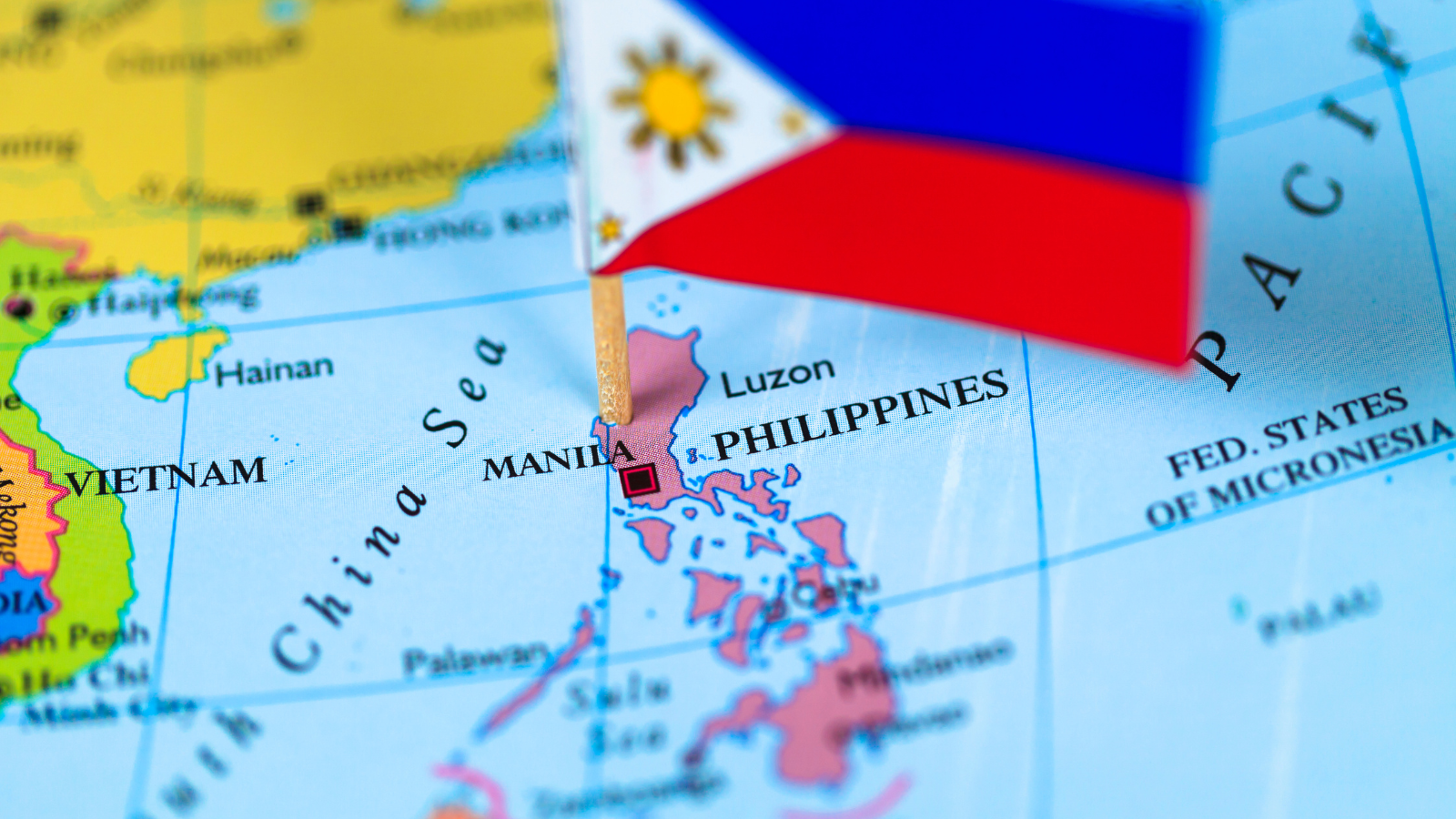
How to Explore the Best of the Philippines: A Guide for Indian Tourists
The Philippines, an archipelago of over 7,000 islands, is a tropical paradise known for its stunning beaches, rich marine life, and vibrant cultural heritage. For Indian tourists, the Philippines offers a mix of adventure, relaxation, and unique experiences, from pristine beaches and island hopping to bustling city life and delicious cuisine. This guide will help you explore the best of the Philippines, covering must-see attractions, travel tips, shopping insights, and more.
Manila: The Capital City
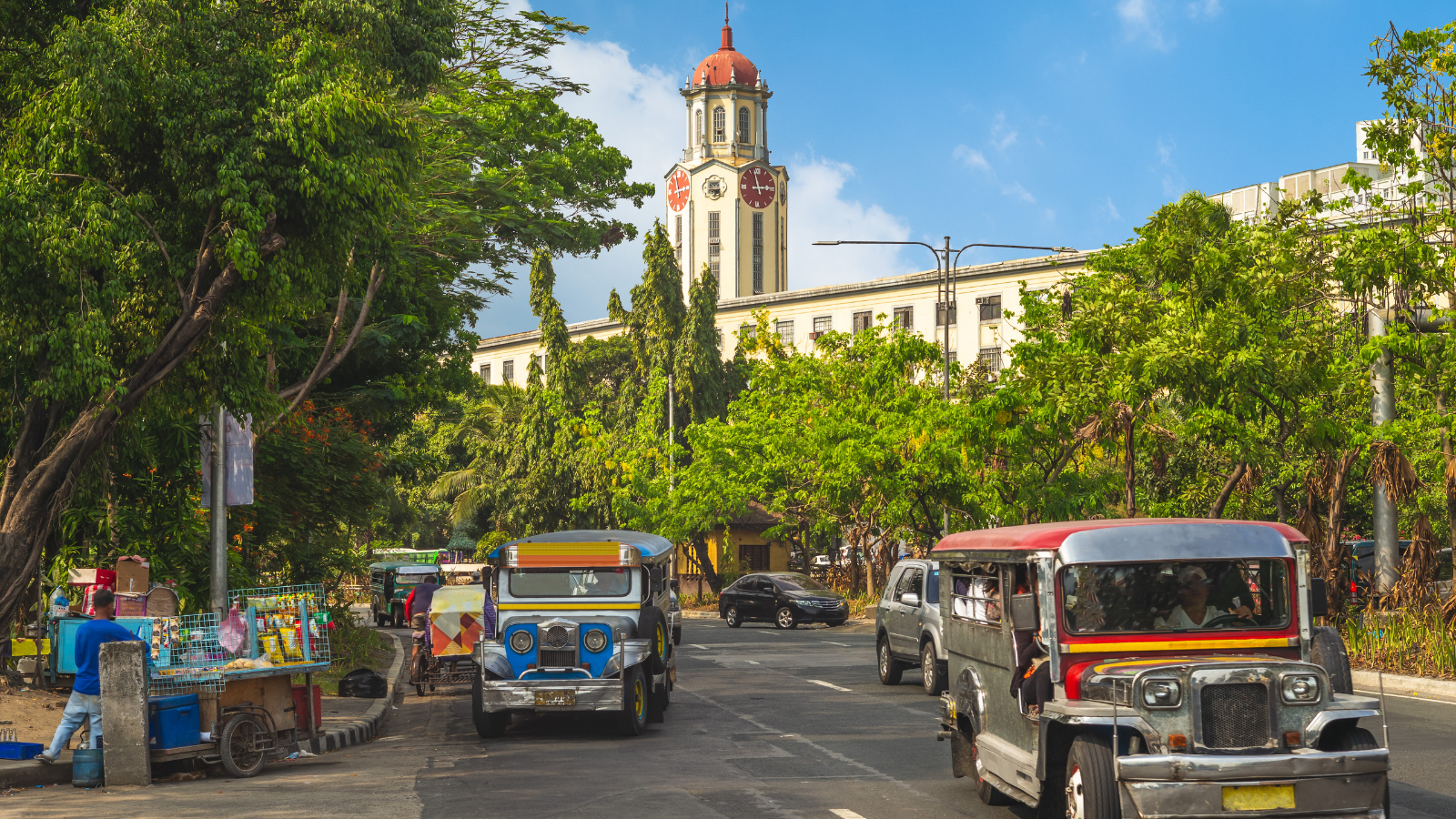
Description:
Manila, the vibrant capital of the Philippines, is a city of contrasts where the old meets the new. The heart of Manila's history is Intramuros, a walled city built during the Spanish colonial period, offering a glimpse into the country’s colonial past with landmarks such as San Agustin Church and Fort Santiago. Beyond its historical sites, Manila is also known for its bustling markets like Divisoria and Greenhills, where tourists can find everything from local crafts to brand-name bargains.
Highlights:
- Intramuros: A historic walled city featuring colonial-era churches, museums, and cobblestone streets.
- Manila Ocean Park: An interactive marine park offering activities like a fish spa, sea lion shows, and an oceanarium with a variety of marine species.
- Rizal Park: A national park dedicated to Dr. José Rizal, a Filipino national hero, featuring gardens, fountains, and monuments.
Travel Tip:
Explore Intramuros in the early morning or late afternoon to avoid the midday heat and crowds. Guided tours are available, giving historical insights and access to off-the-beaten-path areas. In Divisoria Market, be ready to haggle, as it’s a favorite local shopping spot.
Boracay Island: Beach Paradise
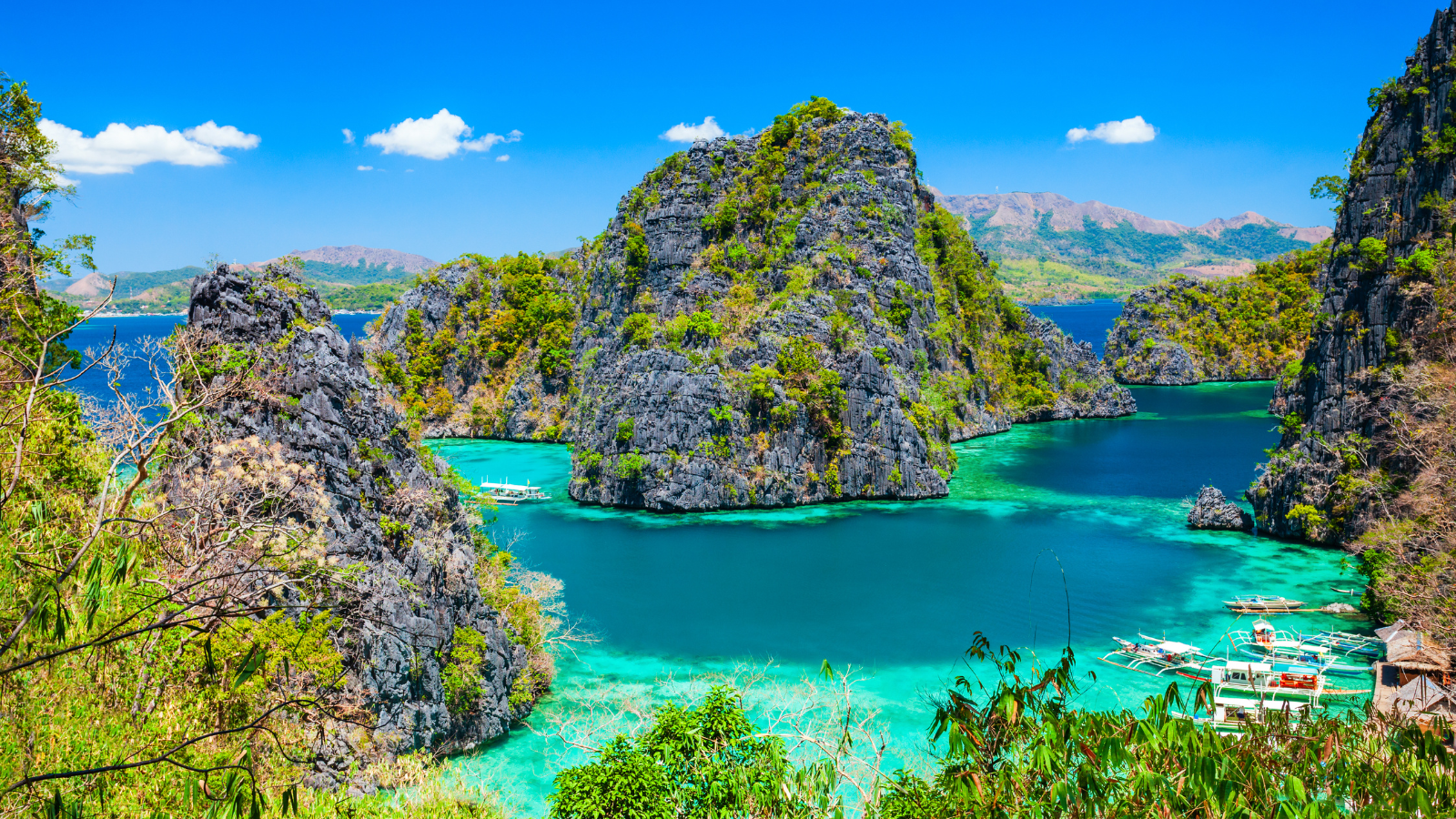
Description:
Boracay, an island famous for its powdery white sands and crystal-clear waters, is a favorite among beach lovers. At the heart of Boracay is White Beach, a four-kilometer stretch of sand lined with cafes, resorts, and restaurants. The island is known for water sports like snorkeling, windsurfing, and jet skiing. When the sun sets, Boracay’s vibrant nightlife comes alive, offering a mix of beach bars, fire shows, and live music.
Highlights:
- White Beach: The island’s main beach known for its fine sands and bustling atmosphere.
- Puka Shell Beach: A quieter beach on the northern side of the island, ideal for a more laid-back experience.
- Water Sports and Nightlife: Parasailing, kite surfing, and a lively nightlife scene make Boracay a thrilling destination.
Travel Tip:
Boracay has a strict environmental policy to maintain its natural beauty, so be mindful of beach cleanliness and respect local regulations. Many restaurants and shops discourage single-use plastics, so consider bringing reusable water bottles and bags.
Cebu: The Queen City of the South
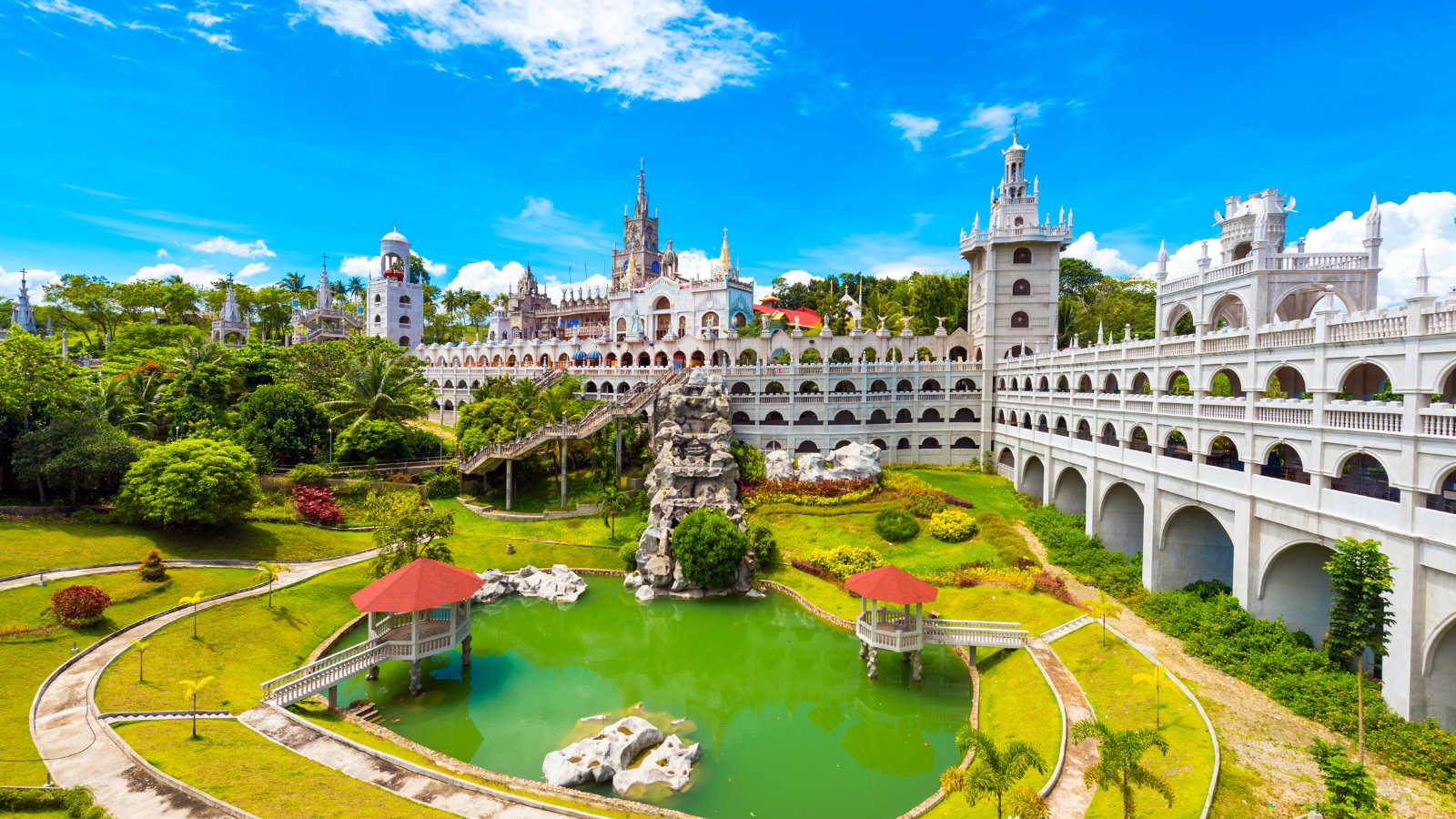
Description:
Cebu is a fascinating mix of history, nature, and adventure. Known as the Queen City of the South, it is home to historical sites like Magellan’s Cross, planted in 1521 by Portuguese explorer Ferdinand Magellan. The Basilica del Santo Niño houses the oldest religious relic in the Philippines. For those seeking adventure, Kawasan Falls offers an exhilarating canyoneering experience, with visitors traversing through waterfalls, natural pools, and cliffs.
Highlights:
- Magellan’s Cross: A historic cross symbolizing the introduction of Christianity to the Philippines.
- Basilica del Santo Niño: The oldest Roman Catholic church in the Philippines.
- Kawasan Falls: A picturesque waterfall and canyoneering site in Badian.
Travel Tip:
For canyoneering at Kawasan Falls, book tours in advance and wear comfortable swimwear and water shoes. The activity requires some physical endurance, so prepare accordingly for the adventure.
Palawan: Nature’s Sanctuary
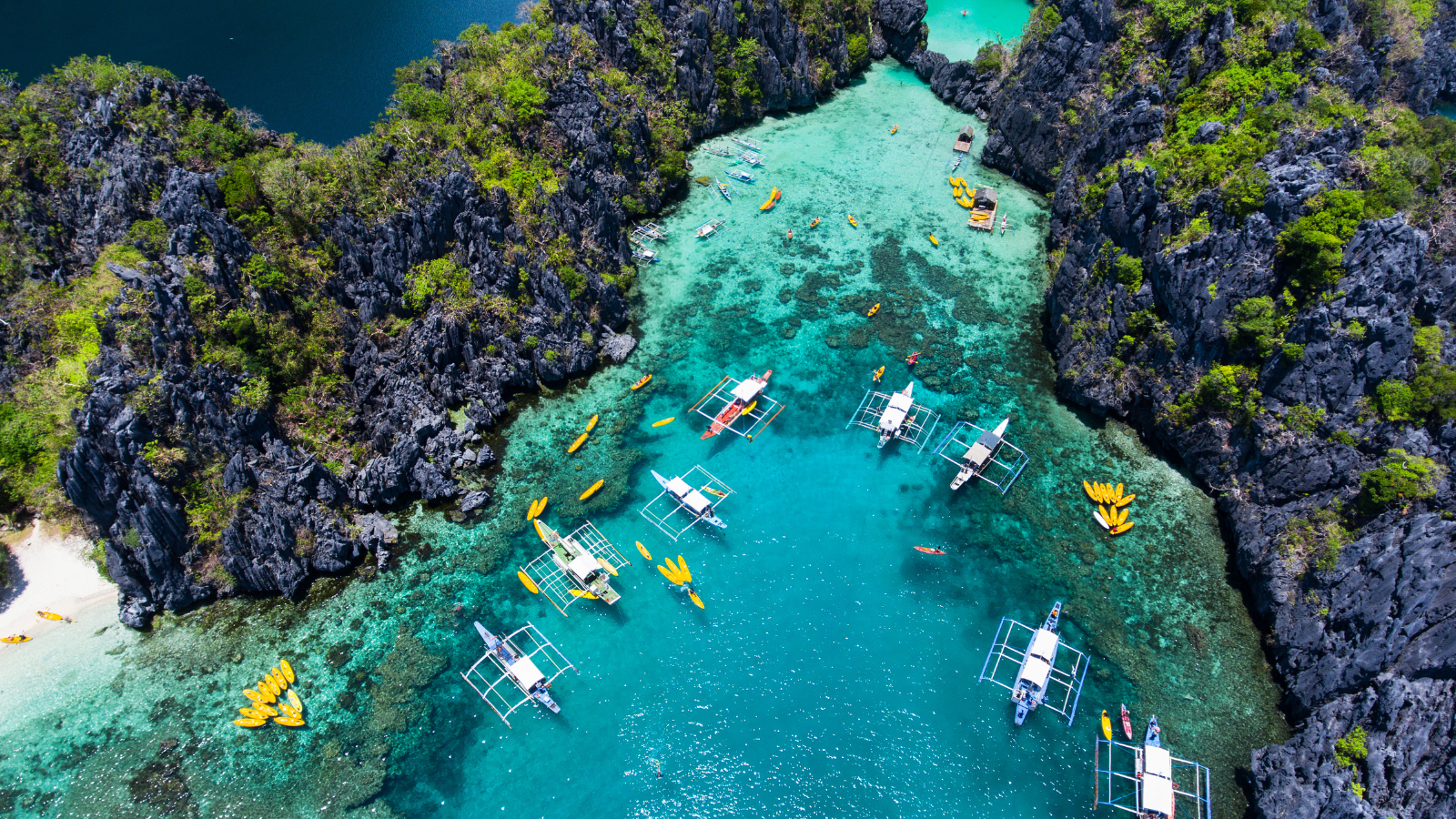
Description:
Palawan is often called the last ecological frontier of the Philippines due to its pristine natural landscapes. El Nido and Puerto Princesa Underground River are Palawan’s main attractions, offering scenic lagoons, limestone cliffs, and a rich marine life. El Nido’s island-hopping tours are a must, taking you through hidden beaches, secret lagoons, and snorkeling spots with colorful coral reefs. The Puerto Princesa Underground River, a UNESCO World Heritage site, is one of the world’s longest underground rivers and a breathtaking natural wonder.
Highlights:
- El Nido: Known for its scenic island-hopping tours to lagoons, hidden beaches, and coral reefs.
- Puerto Princesa Underground River: A stunning underground river that flows into the sea, known for its unique limestone formations.
- Coron: Another gem in Palawan, known for its WWII shipwrecks, beautiful lakes, and snorkeling spots.
Travel Tip:
For island-hopping in El Nido, book with reputable tour operators, as they offer eco-friendly tours that respect the marine ecosystem. Tours can be customized to include destinations like Big Lagoon, Secret Beach, and Snake Island for a personalized experience.
Bohol: Land of the Chocolate Hills
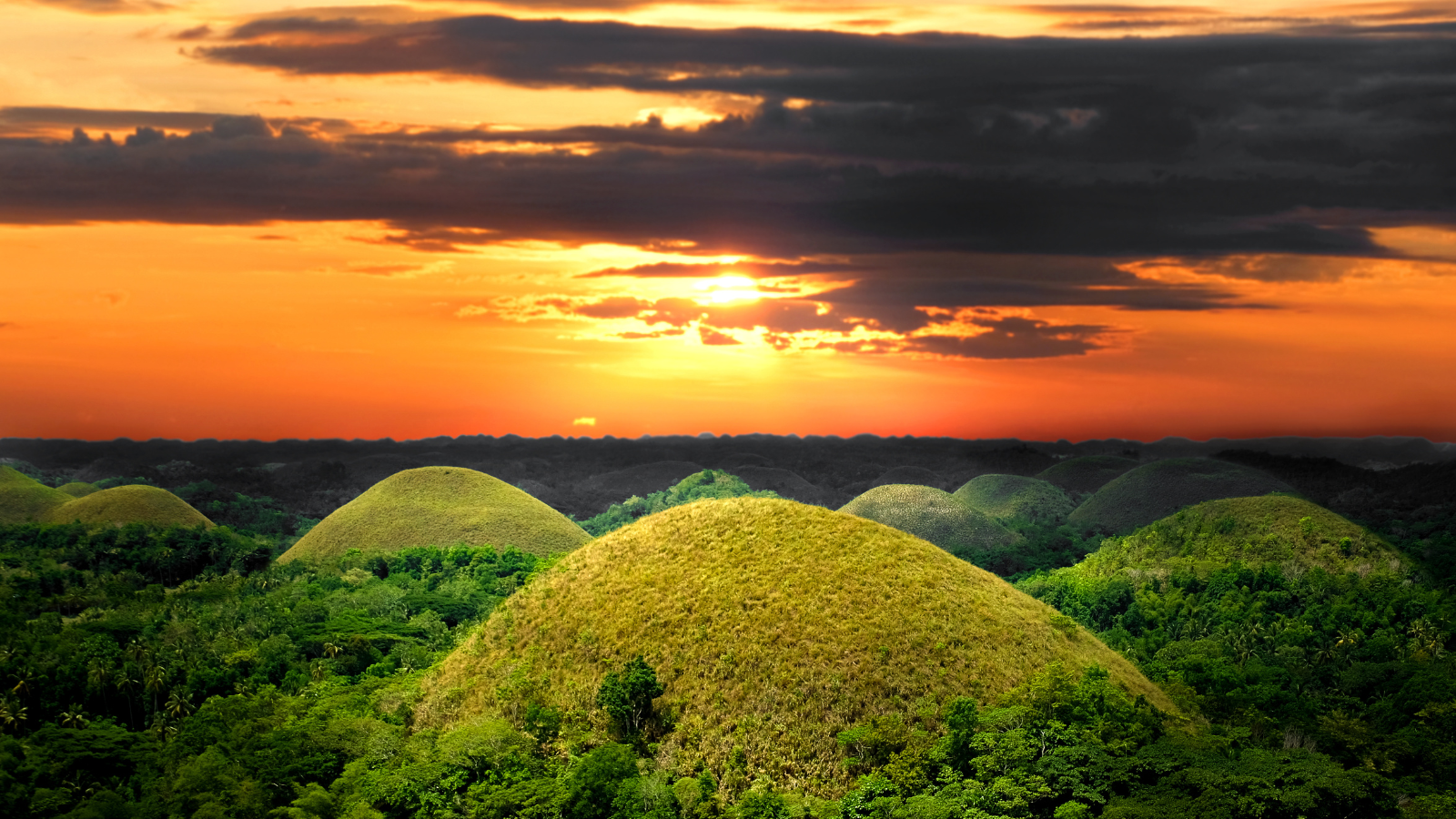
Description:
Bohol is home to the unique Chocolate Hills, a collection of over 1,200 symmetrical hills that turn brown during the dry season, resembling chocolate drops. Bohol also offers a chance to see the Philippine tarsier, one of the world’s smallest primates, at the Philippine Tarsier Sanctuary. The Loboc River Cruise is a tranquil river journey through lush scenery, often featuring local musicians and dancers onboard.
Highlights:
- Chocolate Hills: Bohol’s most famous natural attraction, best viewed from the Chocolate Hills viewing deck.
- Philippine Tarsier Sanctuary: A protected area where visitors can observe the tiny and delicate tarsiers in their natural habitat.
- Loboc River Cruise: A leisurely boat ride along the Loboc River with a buffet meal and live music.
Travel Tip:
The best time to visit the Chocolate Hills is in the early morning for fewer crowds and excellent lighting for photos. The Philippine Tarsier Sanctuary enforces a no-flash photography rule, so keep this in mind to avoid disturbing the tarsiers.
Additional Tips for Exploring the Philippines:
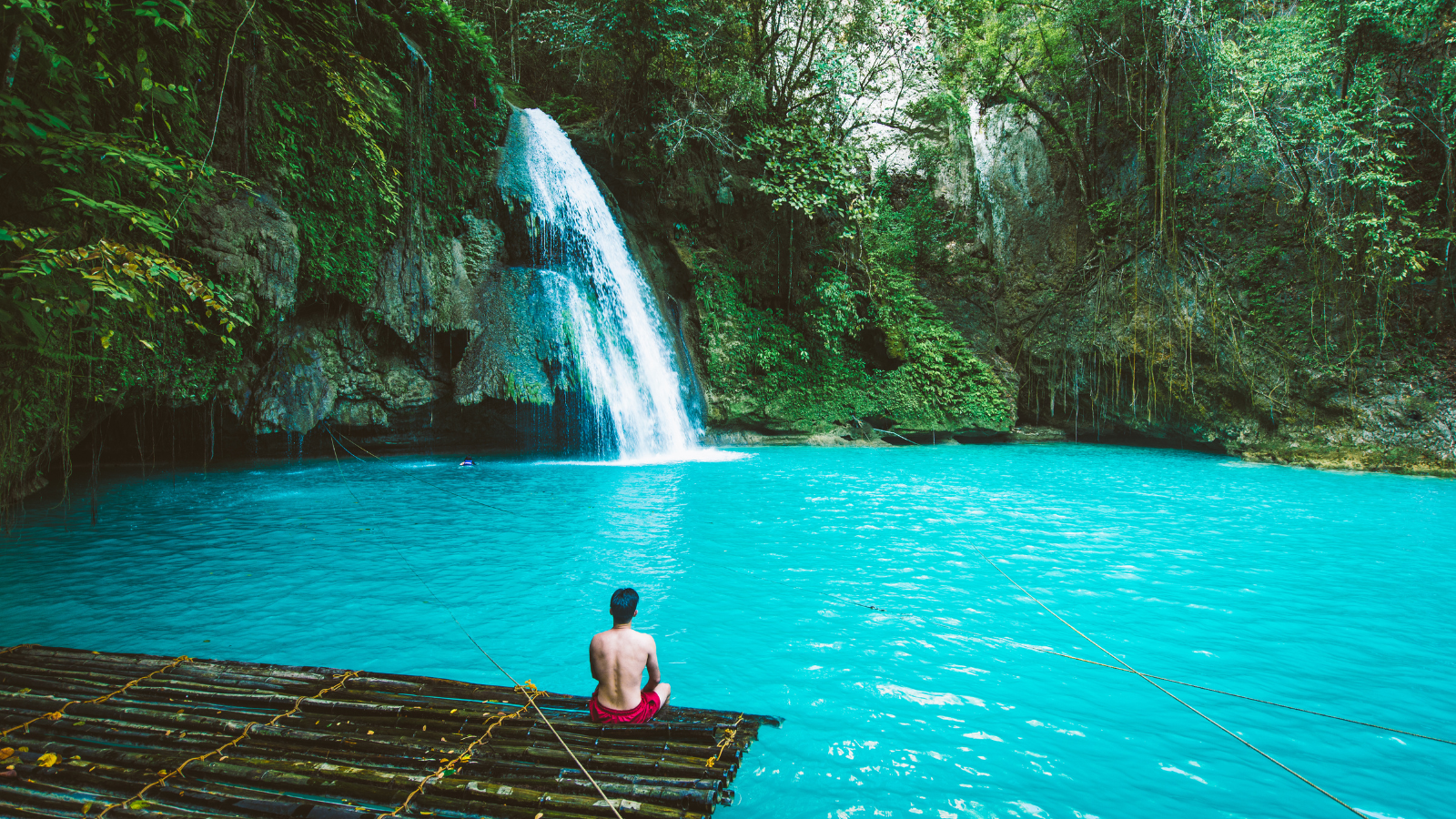
- Getting Around: The Philippines has a variety of transportation options. For inter-island travel, domestic flights are the most convenient, while ferries are a scenic option for closer islands. Within cities, ride-hailing services like Grab, jeepneys, and tricycles are commonly used.
- Cultural Etiquette: Filipinos are friendly and welcoming. While English is widely spoken, learning a few phrases in Tagalog such as “Salamat” (Thank you) and “Magandang Umaga” (Good morning) can be appreciated by locals.
- Local Cuisine to Try: The Philippines offers a diverse cuisine. Popular dishes include adobo (meat stew), sinigang (sour soup), lechon (roast pig), halo-halo (mixed dessert), and lumpia (Filipino spring rolls). Vegetarians can find vegetable versions of popular dishes and enjoy unique tropical fruits like mango, pineapple, and papaya.
Best Time to Visit: The dry season from November to April is the best time for a trip to the Philippines, as the weather is sunny and conducive to outdoor activities. December to March is particularly ideal for beach and island visits.
5-Day Trip Ideas for Trawelmart:
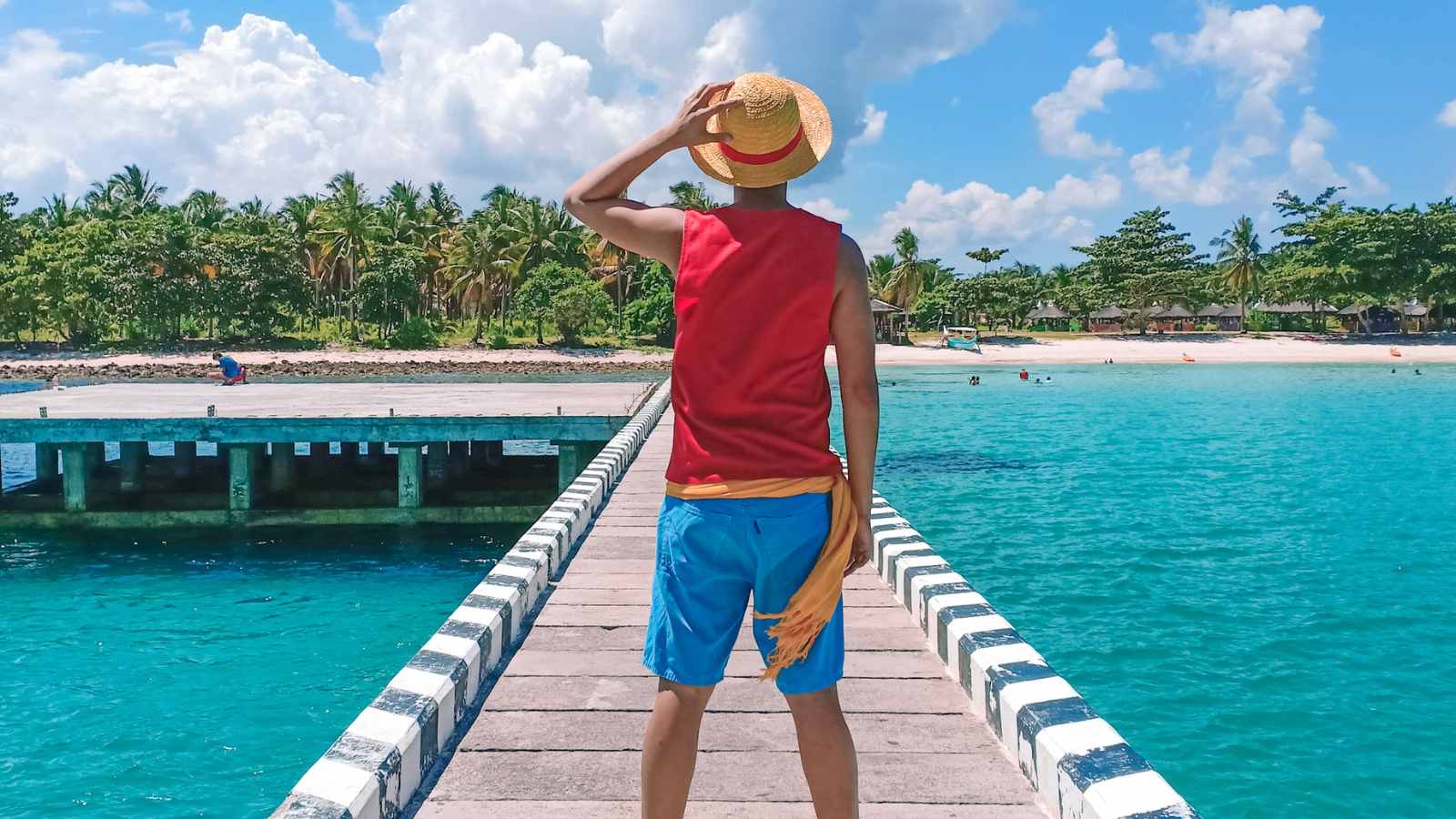
Day 1: Manila
- Activities: Explore Intramuros, Rizal Park, and Manila Ocean Park.
Day 2: Cebu
- Activities: Visit Magellan’s Cross, Basilica del Santo Niño, and experience canyoneering at Kawasan Falls.
Day 3: Boracay
- Activities: Relax at White Beach, try water sports, and enjoy Boracay’s vibrant nightlife.
Day 4: Bohol
- Activities: Visit the Chocolate Hills, Tarsier Sanctuary, and enjoy a Loboc River Cruise.
Day 5: Palawan
Activities: Take an island-hopping tour around El Nido or visit the Puerto Princesa Underground River.
Best Time to Visit the Philippines:
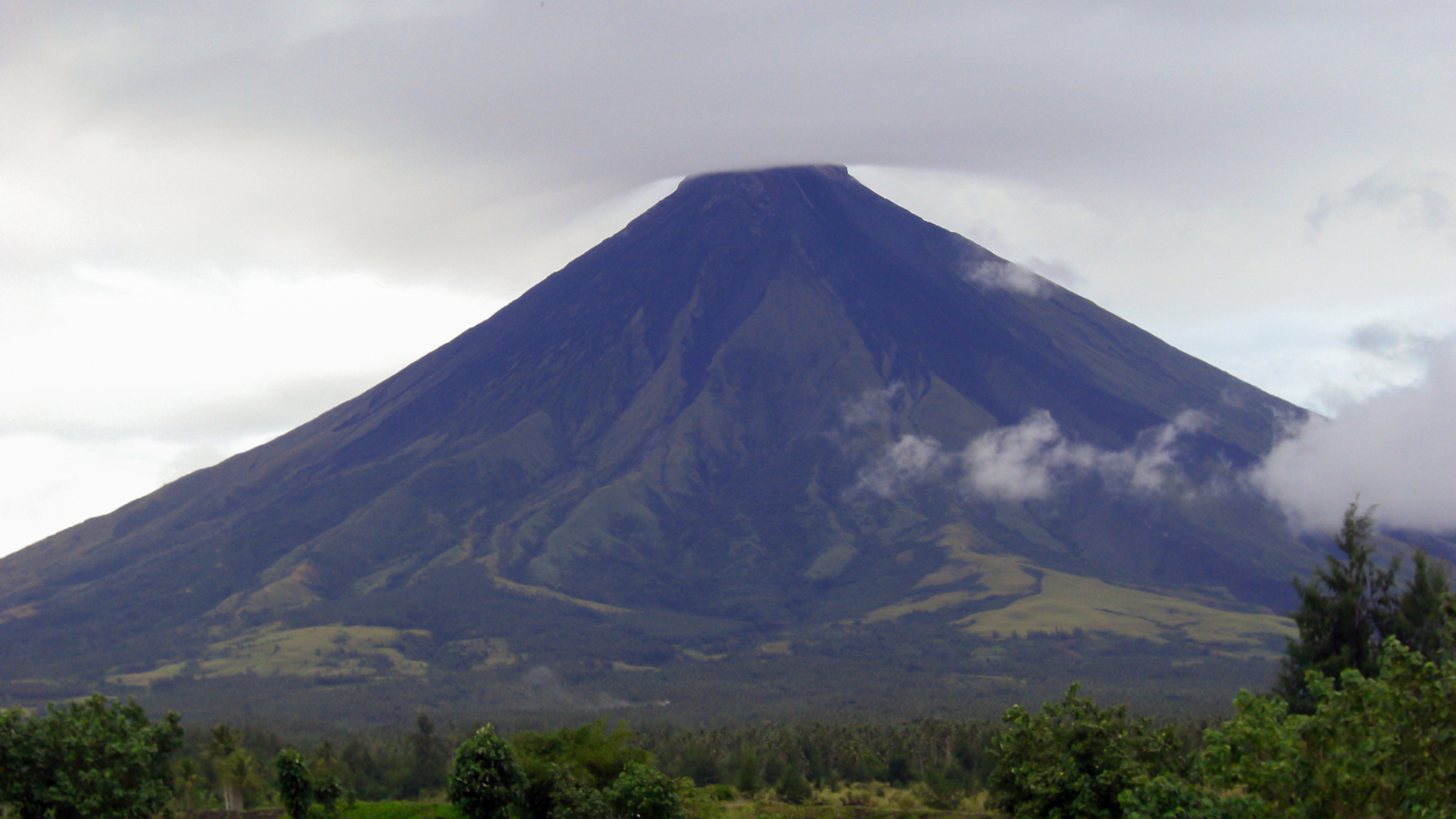
The Philippines has two main seasons: the dry season (November to April) and the wet season (May to October).
- Dry Season (November to April): This is the best time to visit the Philippines, especially from December to March, when temperatures are comfortable and rainfall is low. This season is ideal for beach activities, diving, and island hopping.
Wet Season (May to October): While this season brings monsoon rains, some areas like Cebu and Bohol have milder rains, making them suitable for travel. Additionally, there are fewer tourists, allowing for a quieter experience and often lower prices.
Culture
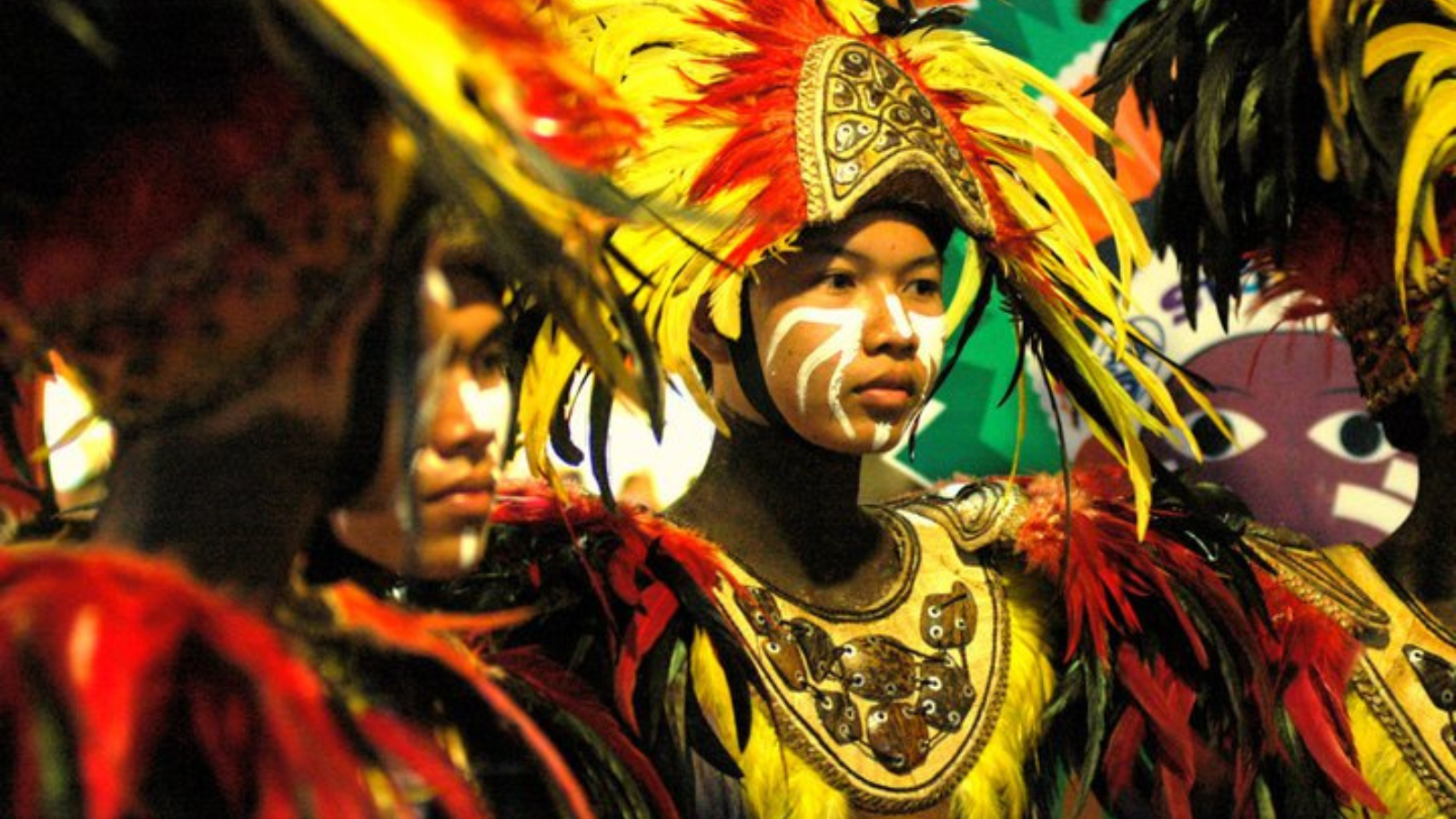
The Philippines is a culturally diverse and vibrant nation shaped by a blend of indigenous, Asian, Spanish, and American influences. This unique combination creates a colorful and welcoming atmosphere, with warm hospitality being a hallmark of Filipino culture.
- Family and Community: Filipinos place a high value on family and community ties, often extending beyond the immediate family to include a strong network of relatives and friends. Family gatherings, celebrations, and festivals are common, with events like Fiestas celebrated across the country to honor patron saints or local heritage.
- Religious Influence: The Philippines is the only predominantly Christian nation in Asia, with about 80% of the population identifying as Roman Catholic. Religious festivals like Sinulog in Cebu and Ati-Atihan in Kalibo are celebrated with colorful parades, traditional dances, and vibrant street parties. Other regions observe Muslim holidays and traditions, particularly in Mindanao.
- Respect and Politeness: Respect for elders and politeness are central in Filipino culture. Elders are addressed with honorifics like "Ate" (older sister) and "Kuya" (older brother), and hand gestures like the "Mano" (bringing an elder’s hand to one’s forehead as a sign of respect) are practiced.
Celebrations and Festivals: Festivals, or “fiestas,” are a significant part of Filipino life. Each city and province celebrates its unique festivals, with vibrant costumes, dances, and local foods. Notable festivals include Pahiyas Festival in Lucban, Quezon, known for colorful displays of food and crafts, and Panagbenga Festival in Baguio, a flower festival with grand floats.
Language:
The Philippines is a multilingual country, with more than 170 languages spoken across its islands. The official languages are Filipino and English, making the Philippines one of the most English-proficient countries in Asia.
- Filipino: Filipino, based on Tagalog, is the national language and widely spoken across the country. Tagalog, the foundation of Filipino, is predominantly spoken in Luzon and Metro Manila.
- English: English is commonly used in business, education, and tourism, making it easy for visitors to communicate and navigate. Most Filipinos are bilingual, fluent in both Filipino and English, and often switch between the two in daily conversation.
- Regional Languages: Besides Tagalog, major regional languages include Cebuano, Ilocano, Bicolano, Hiligaynon, Waray, and Kapampangan. Cebuano is widely spoken in the Visayas and Mindanao regions.
Common Filipino Phrases:
- Hello: Kumusta
- Thank you: Salamat
- Good morning: Magandang umaga
- Good evening: Magandang gabi
- How much? Magkano?
- Where is…? Nasaan ang…?
Knowing a few Filipino words or phrases can be a delightful surprise for locals and is often met with smiles and appreciation.
Food:
Filipino cuisine reflects the country's multicultural influences and regional diversity, offering a delicious variety of flavors, textures, and ingredients. The cuisine combines elements from Malay, Spanish, Chinese, and American culinary traditions, often featuring a blend of savory, sour, and sweet flavors.
Popular Dishes
- Adobo: A quintessential Filipino dish, adobo is a savory stew typically made with chicken or pork marinated in vinegar, soy sauce, garlic, and spices. It has a slightly tangy flavor and is best enjoyed with rice.
- Sinigang: A sour soup usually made with pork, shrimp, or fish, sinigang is flavored with tamarind and a mix of local vegetables. It’s a comforting dish, especially popular during the rainy season.
- Lechon: Often served during celebrations, lechon is a whole pig roasted until the skin is crispy. Cebu is famous for its lechon, known for its distinct seasoning and juicy meat.
- Pancit: Filipino noodle dishes are known as pancit and come in various forms, such as Pancit Canton, Pancit Malabon, and Pancit Palabok. Typically made with stir-fried noodles, meat, vegetables, and a savory sauce, pancit is a go-to dish for gatherings.
- Kare-Kare: A peanut-based stew with oxtail, tripe, and vegetables, kare-kare is typically served with bagoong (fermented shrimp paste) on the side. This hearty dish has a nutty flavor and is often reserved for special occasions.
- Halo-Halo: This colorful dessert is a layered mix of shaved ice, sweetened fruits, jellies, and beans, topped with evaporated milk and sometimes a scoop of ice cream. It’s a refreshing treat, especially popular during the hot summer months.
- Balut: For the adventurous, balut is a unique delicacy: a fertilized duck egg with a partially developed embryo, typically eaten with a pinch of salt or vinegar. It’s considered an “exotic” food and is popular among locals.
Regional Specialties
- Bicol Express: A spicy dish from the Bicol region, made with pork, coconut milk, and chili peppers.
- Laing: Also from Bicol, laing is made with dried taro leaves, coconut milk, and chilies, often enjoyed as a side dish.
- Inasal: A Visayan-style grilled chicken marinated in vinegar, soy sauce, and spices, then grilled for a smoky flavor.
Dining Etiquette and Food Culture
- Kamayan (Eating with Hands): In Filipino culture, especially in rural areas, eating with hands, known as “kamayan,” is common and often encouraged for traditional meals. For visitors, it’s a unique way to enjoy the flavors of Filipino food.
- Sharing Culture: Food in the Philippines is often served family-style, with everyone sharing from a variety of dishes. This reflects the communal spirit and warmth of Filipino hospitality.
Celebratory Feasts (Fiesta and Lechon): Filipino feasts, especially during fiestas, showcase a variety of dishes, with lechon as the centerpiece. These gatherings are characterized by an abundance of food, music, and community.
Shopping Tips in the Philippines:

- Popular Shopping Destinations: Manila is a shopping haven, with popular spots like Greenbelt, SM Mall of Asia, Greenhills Shopping Center, and Divisoria Market offering everything from designer brands to local handicrafts.
- Unique Souvenirs: Popular items include handwoven textiles, local jewelry, Filipino snacks, and shell crafts.
- Bargaining Tips: Bargaining is common in markets like Divisoria and Greenhills, so don’t hesitate to negotiate for better deals.
Duty-Free Shopping: The Philippines offers duty-free shopping at airports, and many major malls have duty-free sections for tourists.
Currency and Cash Details:
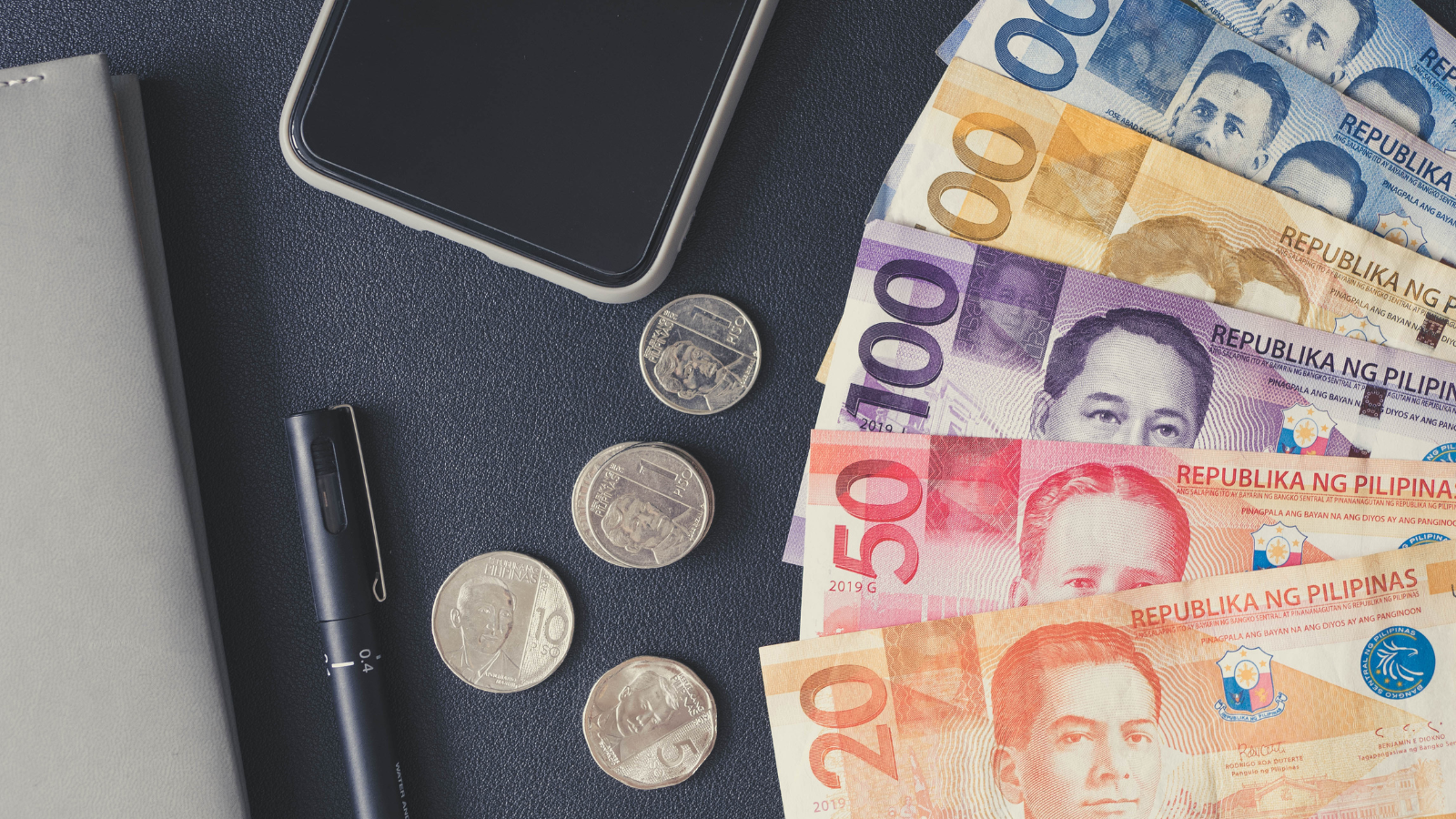
- Currency: The official currency in the Philippines is the Philippine Peso (PHP).
- Cash or Card: Credit and debit cards are accepted in most urban and tourist areas, but carrying cash is advisable for smaller towns, local markets, and street vendors.
- ATMs: ATMs are available across the country, especially in major cities and tourist spots. Many banks accept international cards, but check with your provider for fees.
Currency Exchange: Exchange centers are available at airports, banks, and authorized money exchange counters in cities. Rates at airports may be slightly less favorable, so consider exchanging only a small amount upon arrival.
FAQs:
1. Do I need a visa to visit the Philippines as an Indian tourist?
- Answer: Indian tourists require a visa to enter the Philippines, which can be obtained online or at the Philippine Embassy. However, Indian travelers with a valid visa from the US, Japan, Australia, Canada, Schengen, or UK may enter visa-free for up to 14 days.
2. What should I pack for a trip to the Philippines?
- Answer: Pack lightweight, breathable clothing, swimwear, sunscreen, a hat, insect repellent, and comfortable walking shoes. A rain jacket or umbrella is recommended, especially if traveling during the rainy season.
3. Is English widely spoken in the Philippines?
- Answer: Yes, English is widely spoken across the Philippines, making it easy for Indian tourists to communicate and navigate.
4. What’s the best way to get around the Philippines?
- Answer: Domestic flights are the fastest way to travel between islands. For local travel, options include buses, jeepneys, tricycles, and ride-hailing services like Grab.
5. Is it safe to travel in the Philippines?
- Answer: The Philippines is generally safe for tourists. However, exercise caution in crowded areas, avoid isolated spots at night, and follow local advisories.
6. Are vegetarian and Indian food options available in the Philippines?
- Answer: Major cities like Manila and Cebu have Indian restaurants and vegetarian options. However, in smaller towns, options may be limited, so plan accordingly.
7. What currency should I carry, and is there a preferred method of payment?
- Answer: Carry Philippine Pesos (PHP) for daily transactions. Credit cards are widely accepted, but smaller establishments prefer cash.
8. What are some must-try Filipino dishes?
- Answer: Try adobo (marinated meat), sinigang (sour soup), lechon (roast pork), and halo-halo (a popular dessert). Vegetarian travelers can try dishes like ginataang gulay (vegetables in coconut milk) and turon (fried banana rolls).
9. Do I need travel insurance for the Philippines?
- Answer: While not mandatory, travel insurance is highly recommended to cover medical emergencies, trip cancellations, and lost luggage.
10. Are there entry fees for tourist spots in the Philippines?
- Answer: Some attractions, like national parks and historical sites, have small entry fees, typically ranging from 20 to 500 PHP. Local guides and some activity fees may be extra.






